-
Car Reviews
- All reviews
- Midsize SUVs
- Small cars
- Utes
- Small SUVs
- Large SUVs
- Large cars
- Sports SUVs
- Sports cars
- Vans
Latest reviews
- Car News
-
Car Comparisons
Latest comparisons
- Chasing Deals
The Jeep Grand Cherokee 4xe’s turbo-electric powertrain makes the Pentastar V6 feel ancient – provided you can justify the eye-watering $31,500 premium
The plug-in hybrid Grand Cherokee 4xe brings a level of tech and refinement never seen in a Jeep before – if you can stomach the $129,950 price, and the fact it has poor fuel economy once its hybrid battery is flat.
Despite only having five seats, the 4xe (pronounced four by e) becomes the range-topping Grand Cherokee, sitting above the V6-powered L Summit Reserve in the lineup.
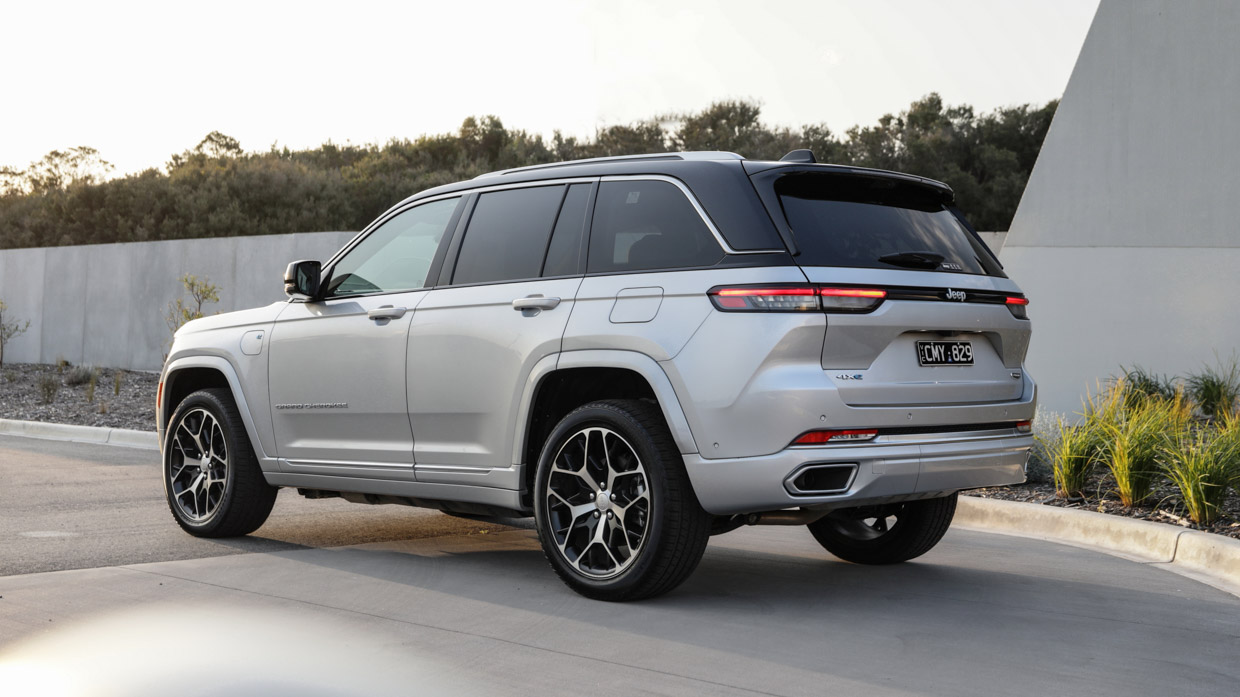
The 4xe combines a 2.0-litre turbocharged petrol four-cylinder with an electric motor and a lithium-ion battery with about 14kWh of usable capacity. Just as with a full EV, this battery is primarily designed to be charged from a plug.
Unlike an EV, the Grand Cherokee 4xe offers relatively modest all-electric driving range: 50-52km on the WLTP measuring standard with consumption of around 28kWh/100km.
The engine, acting alone, produces 200kW/400Nm, and the electric motor 107kW/255Nm, for a combined stated output of 280kW/637Nm.
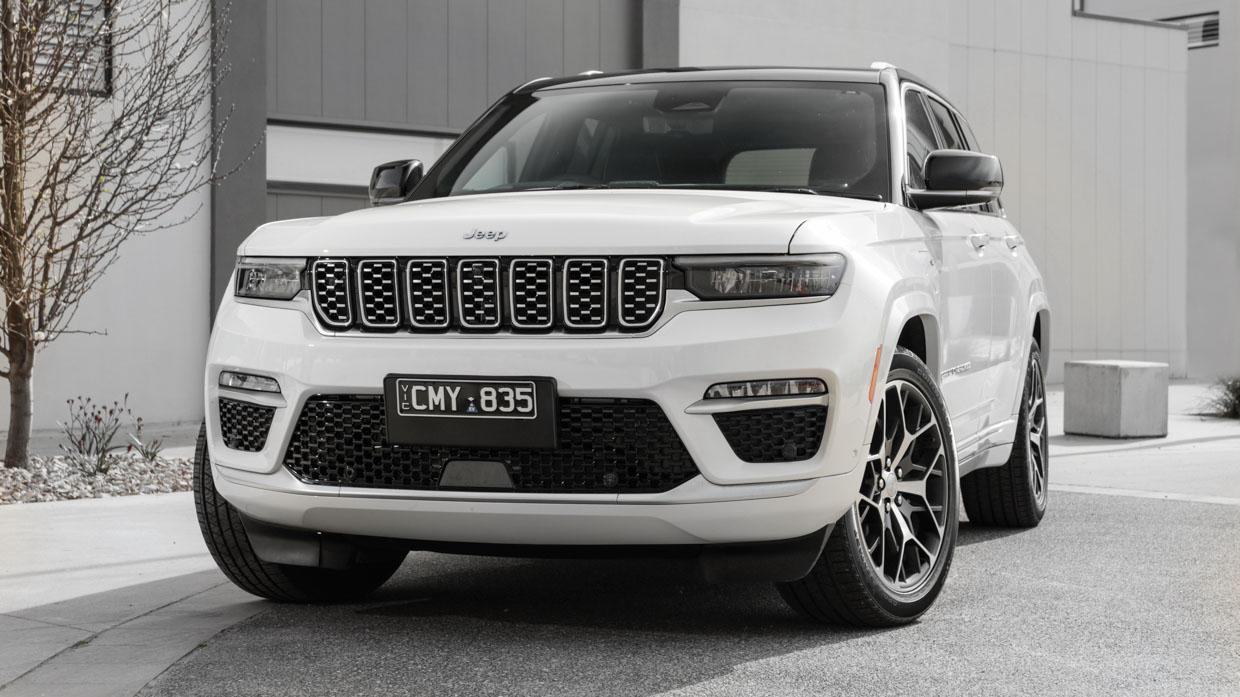
When the battery is charged and the combined output is deployed, the Grand Cherokee 4xe makes more torque than the previous-generation Hemi V8 SRT. The hybrid uses an eight-speed automatic transmission.
Recharging takes “less than 10 hours” when plugged into a standard 240-volt home wall socket, or “less than three hours” with a 7kW home charger, which typically cost around $1500 installed.
Jeep claims 3.2L/100km. As with all PHEV fuel economy claims, this figure can mislead. You will only see anything approaching 3.2L/100km for the first 100km of driving, and only if you start that drive with a fully charged battery. Once the hybrid battery is depleted after 50km or so, you’ll see around 10L/100km until you plug the car back in.
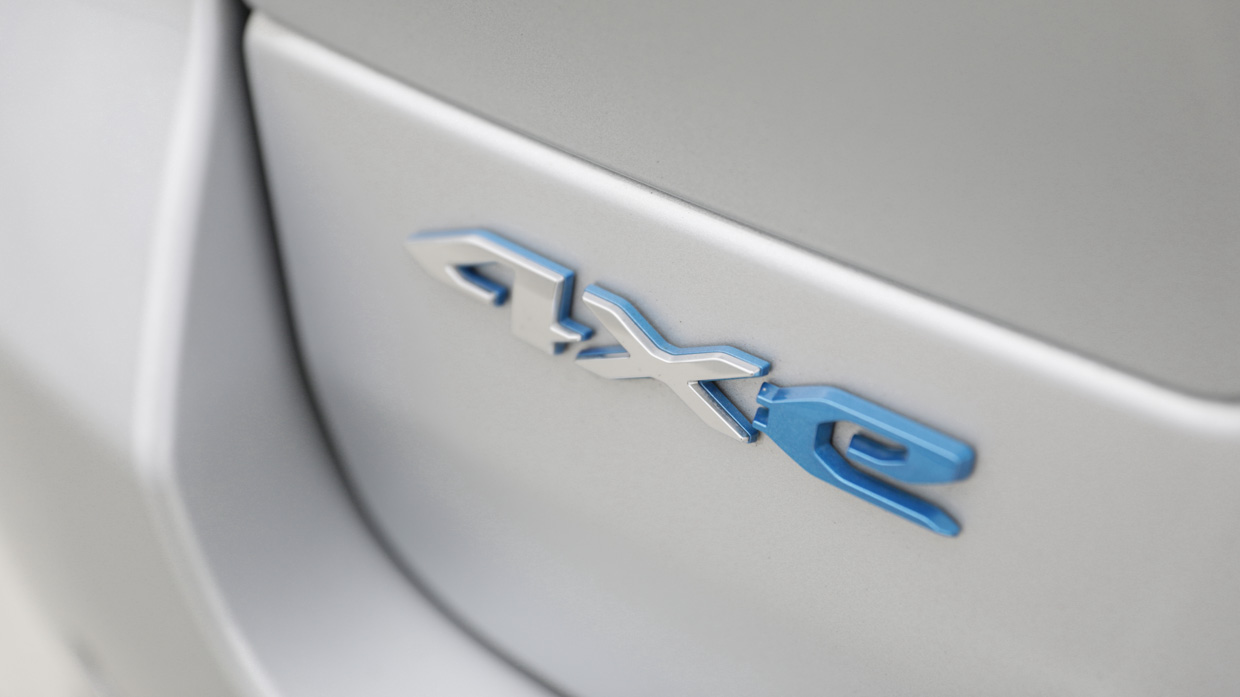
Assembled in Detroit, Michigan, USA, the 4xe comes with all the usual Jeep off-roading smarts, including a two-speed transfer case with low range.
The problem, mainly, is the price. A five-seater only, the 4xe’s $129,950 (before on-road costs) tag represents a $10,500 premium over the seven-seat L Summit Reserve grade.
Compare the 4xe to other five-seat Grand Cherokees, and the hybrid is an eye-watering $31,500 upcharge over the V6-powered Overland ($98,450) – a vehicle that is quite richly equipped itself.
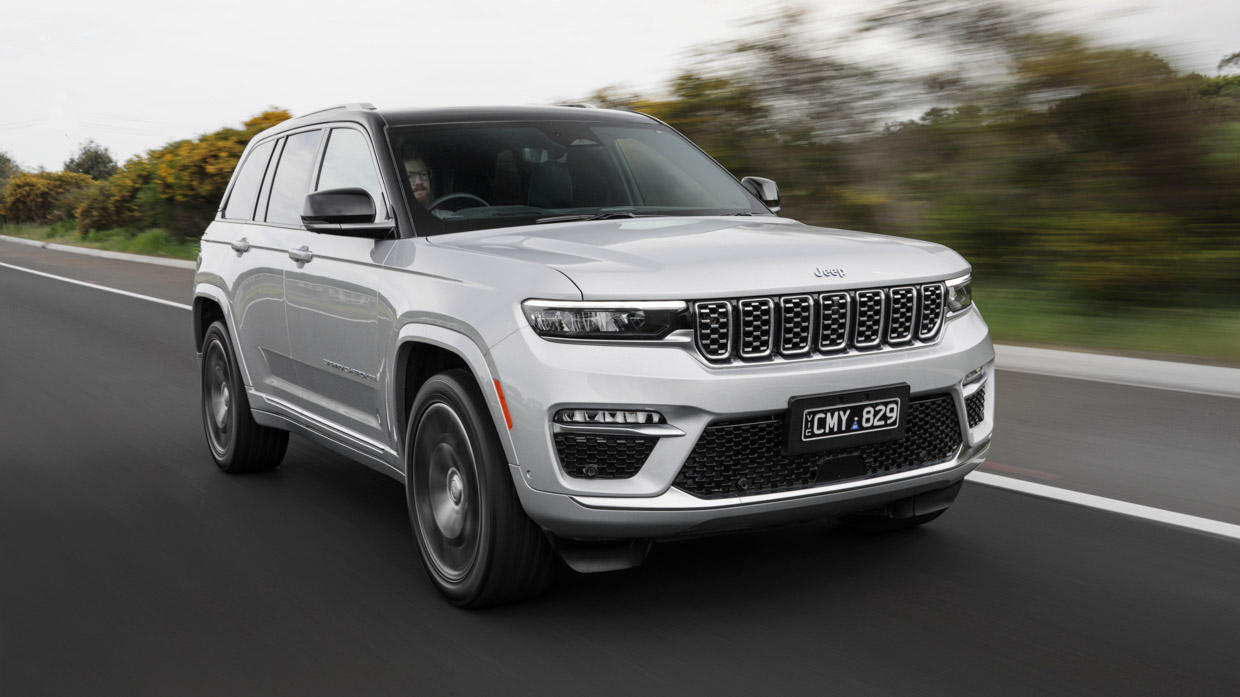
It would take many, many years to recoup the additional expense of the hybrid – so is the 4xe possibly worth the extra spend?
The 4xe’s price puts it in precarious premium territory, around rivals from Audi, BMW and Mercedes-Benz, which we mention in our verdict at the bottom.
Chasing Cars got behind the wheel of the Grand Cherokee 4xe in the Yarra Valley, Victoria.
The $129K 4xe’s range-topping Summit Reserve specification means it comes loaded with standard equipment, even if a great deal of it is shared with the aforementioned $98K V6 Overland.
Both the Overland and Summit Reserve come standard with height-adjustable air suspension, Quadra-Trac II four-wheel-drive with low range, heated and cooled front seats, heated outboard rear seats, a heated steering wheel, hands-free electric tailgate and dual-pane panoramic sunroof.
The Overland comes with very good quality Nappa leather interior, too, even if it isn’t quilted, as in the Summit Reserve.
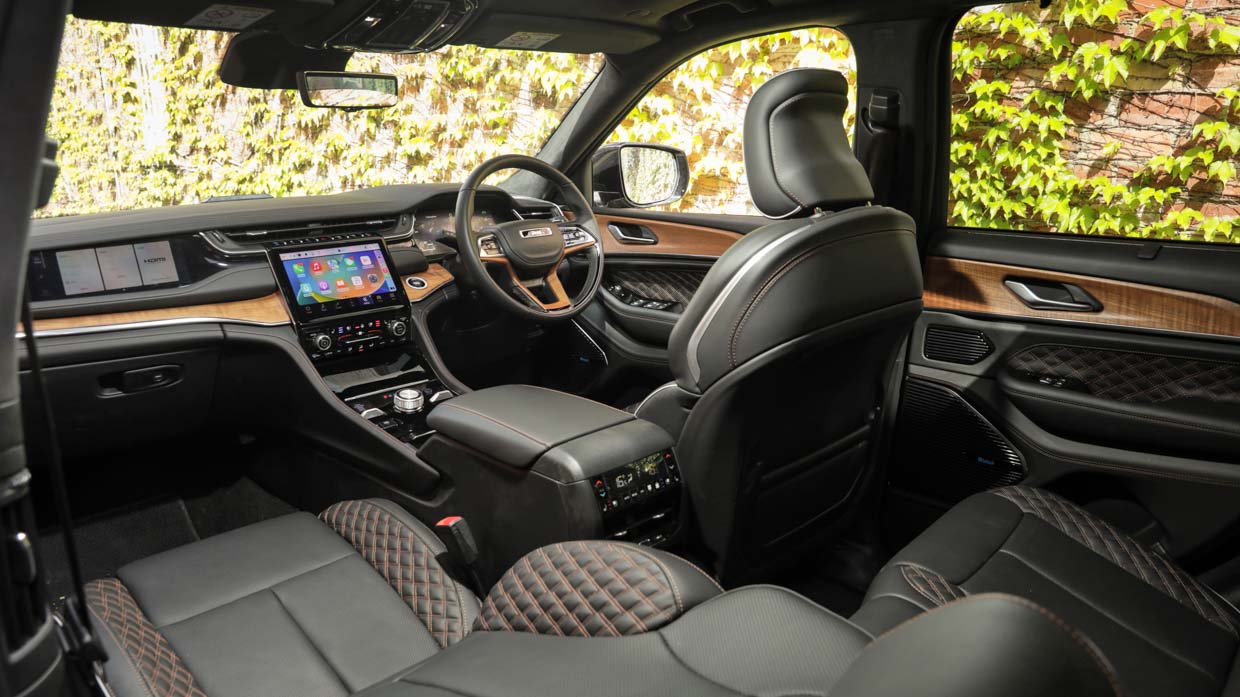
Inside, the 4xe’s 10.25-inch digital instrument cluster and 10.1-inch central touchscreen infotainment screens are standard across upper grades of the Grand Cherokee range, as is satellite navigation, wireless Apple CarPlay and wireless Android Auto.
Ignoring its plug-in hybrid powertrain, the 4xe justifies its $31,500 premium on top of five-seat Overland with the following additional standard equipment:
There are only two options available with the 4xe: premium paint, and the $5500 Advanced Tech Group which grants head-up display, night vision, and an additional 10.25-inch screen for the front passenger.
This second screen is mounted in-dash, and can play films and show navigation directions without being seen from the driver’s perspective due to trick pixels.
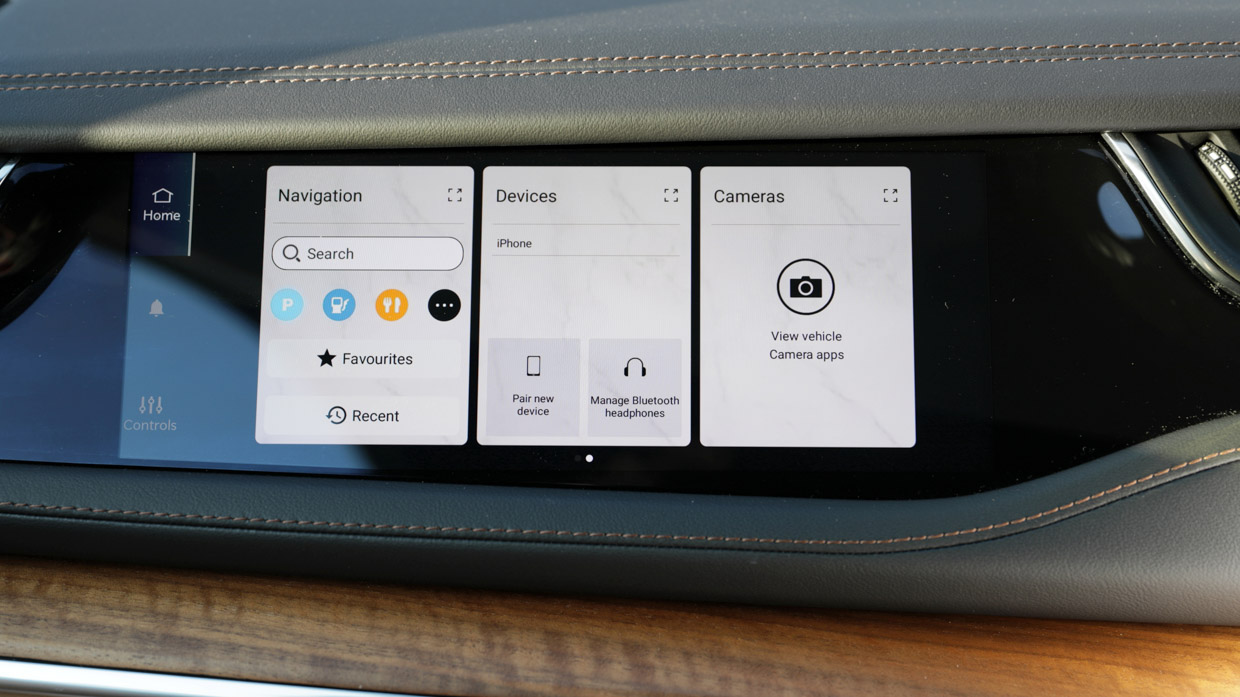
The pack also includes a wireless phone charging pad – something that really should be standard, as it is on the base $77,950 Night Eagle. Head-up display should be standard too if you ask us.
The 4xe has a 2722kg maximum braked towing capacity, 91kg less than the V6 Overland – despite earlier claims that the 4xe would have towing capability of a kind to rival the old-generation diesel, which could haul 3500kg.
The turbocharged four-cylinder powertrain, and electric motor, have elevated the Grand Cherokee driving experience far beyond that of the cheap-sounding, slightly breathless Pentastar naturally aspirated V6.
This Jeep has now got the powertrain refinement and grunt to match its luxe-looking interior.
The driving position is good – placing you nice and high, in traditional SUV style – and forward visibility is excellent.
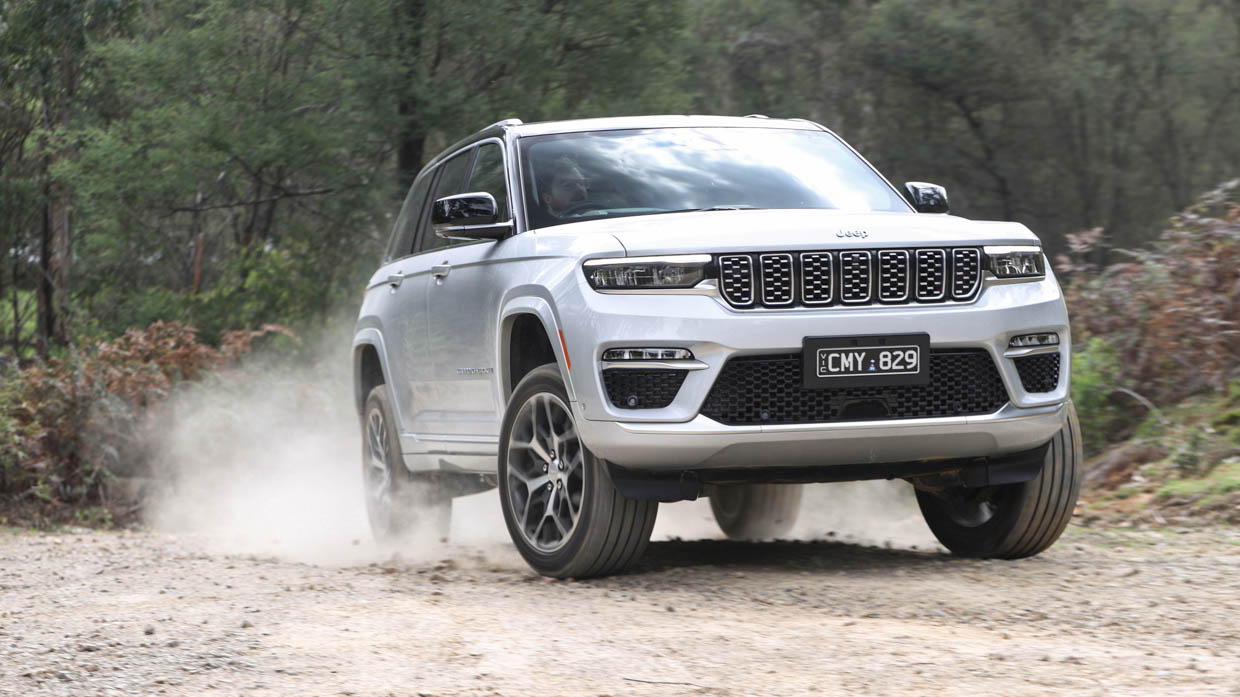
Hidden on the lower dash near your right knee are three drive mode buttons unique to the 4xe: Hybrid, Electric and E-Save.
In the urban environment, the electric motor gives the Grand Cherokee low-speed smoothness, serenity and refinement it’s never had before – even if, with just 107kW/255Nm from the single electric motor, performance in EV mode is merely adequate.
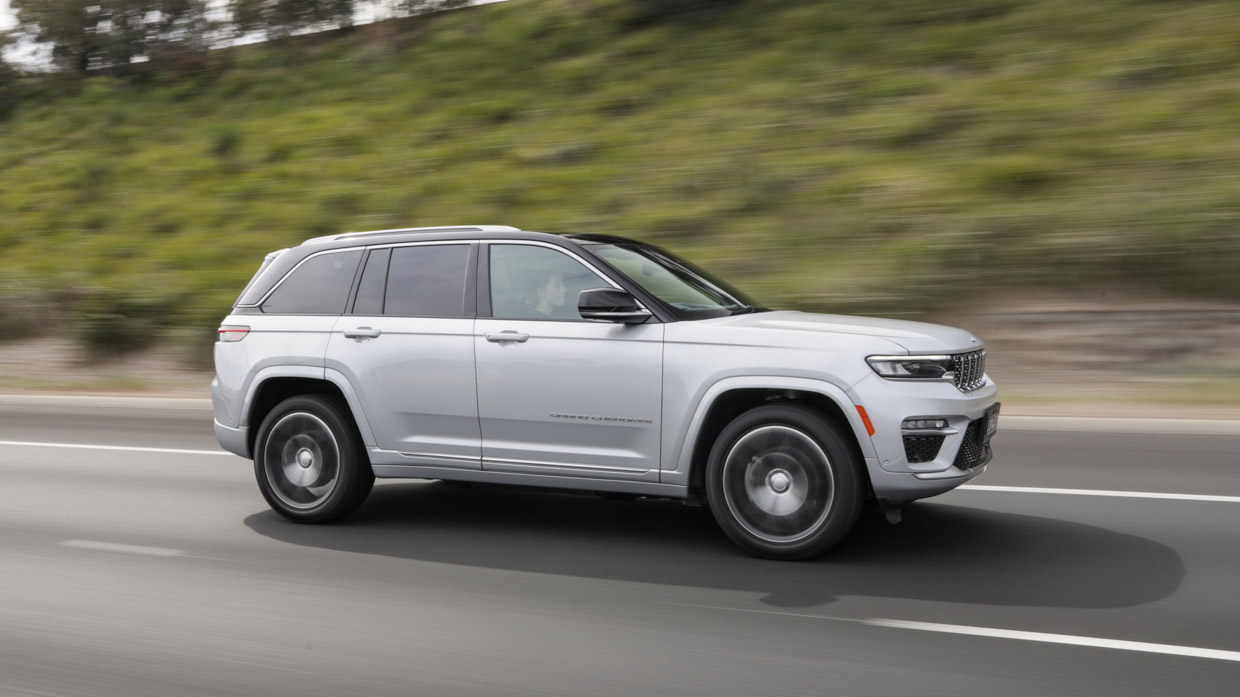
Combine both electricity and turbo four-cylinder power, however, and there’s plenty of grunt on tap. There’s so much more low- to mid-range torque and muscularity than the naturally aspirated V6 that the 4xe drives in an almost totally different and frankly nicer way.
One drive in the 4xe hybrid suddenly makes the inferior V6 feel peaky. The new powertrain corrects the much-maligned lack of lowdown torque of the old engine.
The 4xe’s ride quality is good, but we hoped for better. Many air suspension systems deliver a lovely, long-strong, wafting ride, however the 4xe’s feels like a conventional coil spring and adaptive damper set-up.
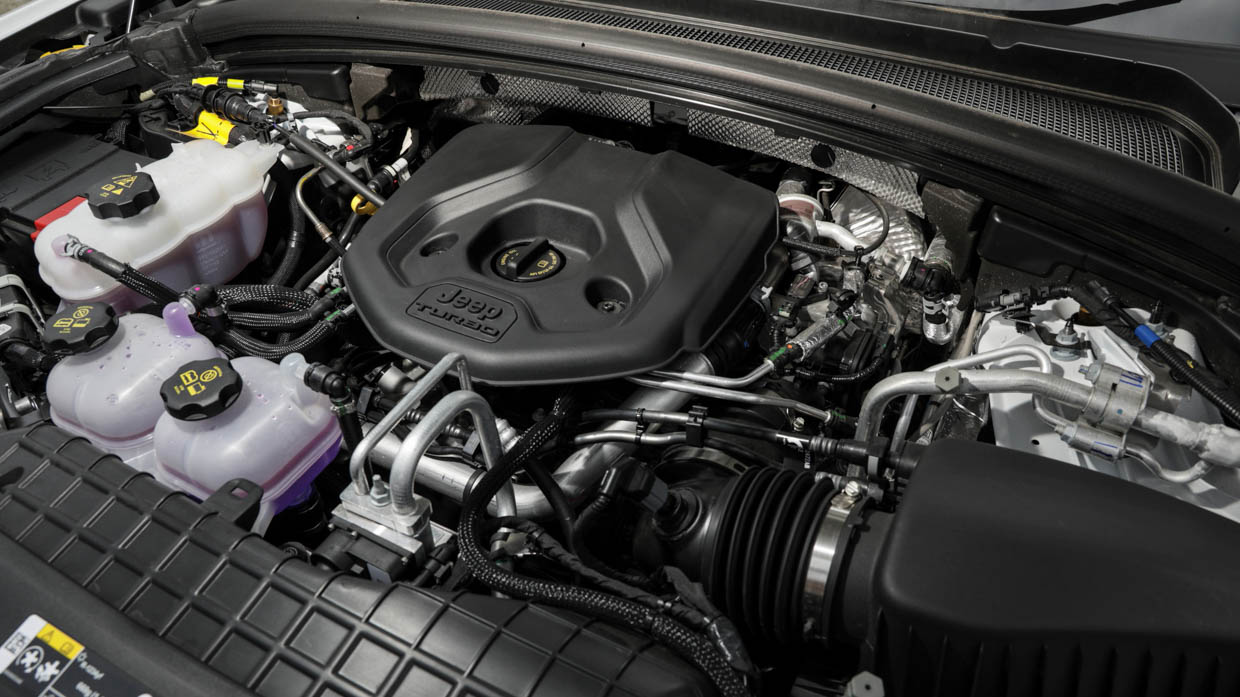
Find yourself on a winding road and the handling is impressive in isolation, thanks in part to the 275-section Continental tyres which offer great grip in the face of a 2536kg tare weight – a significant 369kg more than a five-seat Overland V6.
Ultimately, though, you push the 4xe up until about seven-tenths and it starts to feel very heavy, wide and not too keen to go any harder.
This isn’t a driver’s SUV, and we suspect the almost-confirmed Volkswagen Touareg R plug-in hybrid will be a more sporting choice.
You are also constantly reminded of the Jeep’s extra weight while braking, the car feeling to need a little more space and pedal pressure to stop than you first guess, although you’d get used to this.
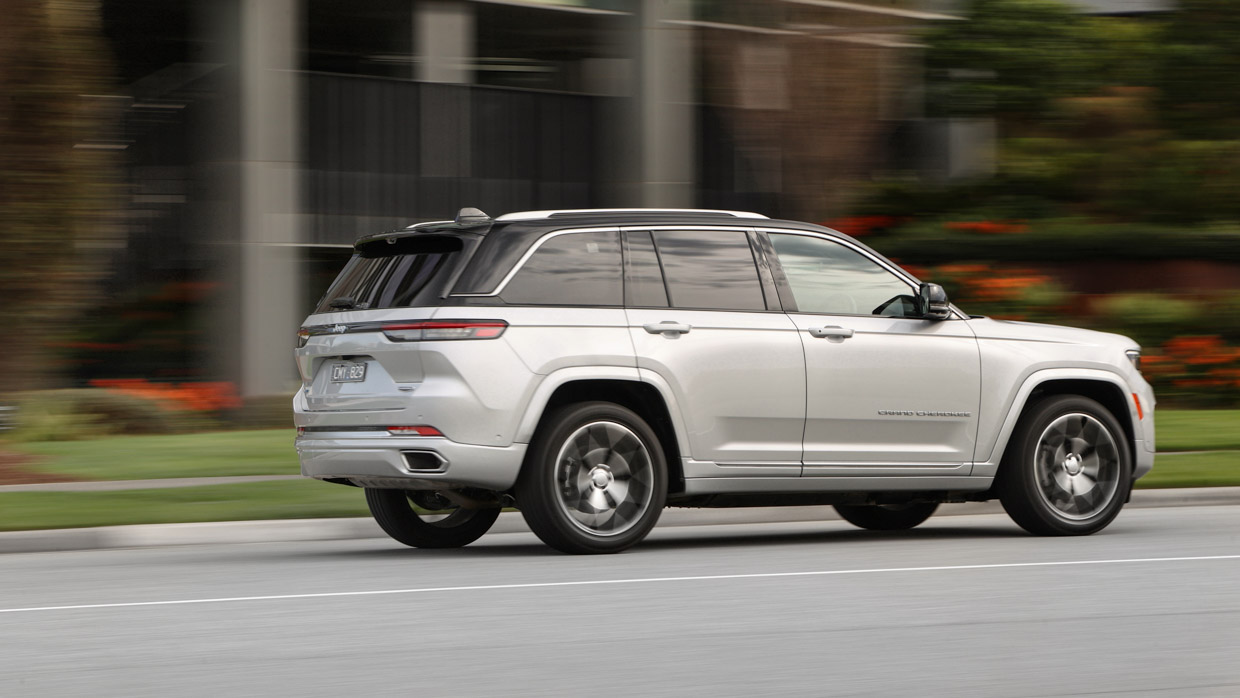
There seems to be only one (mild) braking regeneration mode too, meaning the 4xe does not offer the fabled ‘one-pedal’ driving feel of some other hybrids and EVs.
We’d want to spend a bit more time assessing the ultimate refinement of the 4xe’s hybrid powertrain, as it seems to deliver the occasional unbecoming clunk when slowing to a stop, or selecting between drive and reverse.
The 4xe has serious ‘poke your head in the window’ wow factor, with its triple dashboard screens, quilted tan leather upholstery, microsuede roof lining, wood trim inserts and light-filling full-length sunroof. It’s surely the most luxurious Jeep ever.
The doors close with a charming, deliberate clack – a sensory Easter egg, of sorts, and a throwback to Jeeps of old. You feel very spoiled once you’re inside, as if every function is electric.
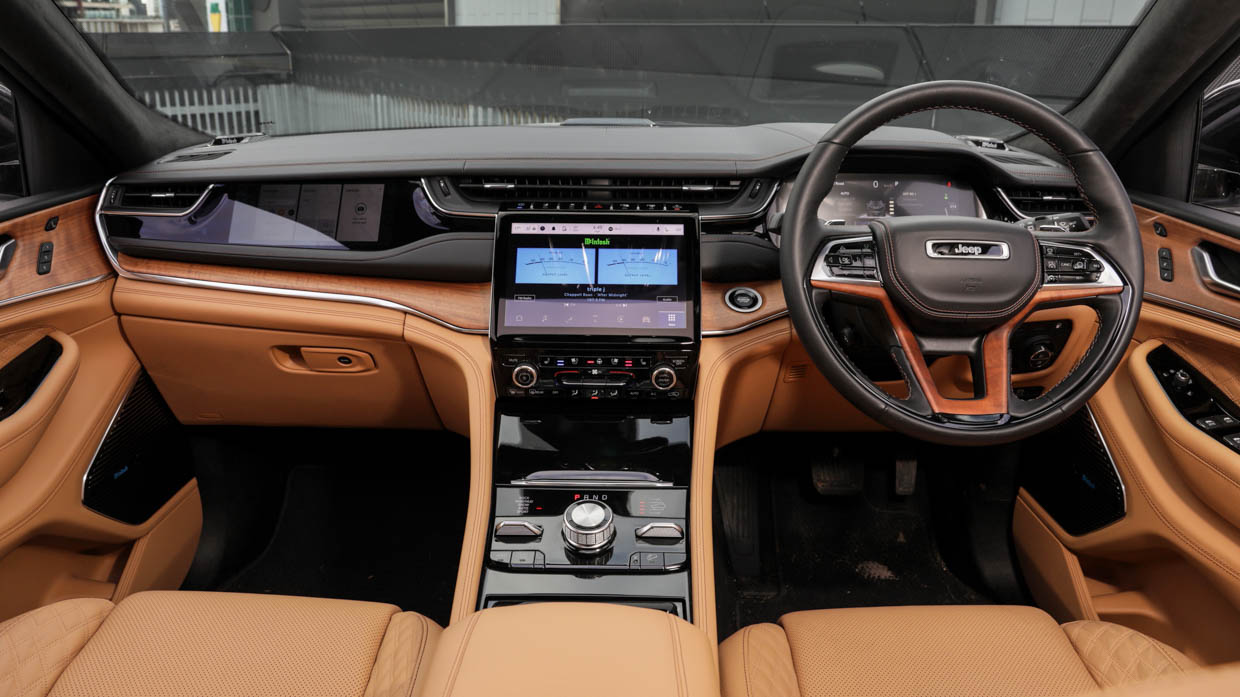

It’s eye-opening to remember that in America, the Grand Cherokee has an even more opulent sibling in the Grand Wagoneer model that is not sold in Australia.
The abundant, high-resolution screens give a high-tech feel, while the entire door cards are softly trimmed. You have to go hunting for any hard, cheap, scratchy plastics, an impressive fact on its own.
Second-row passengers are almost as spoiled as the front.
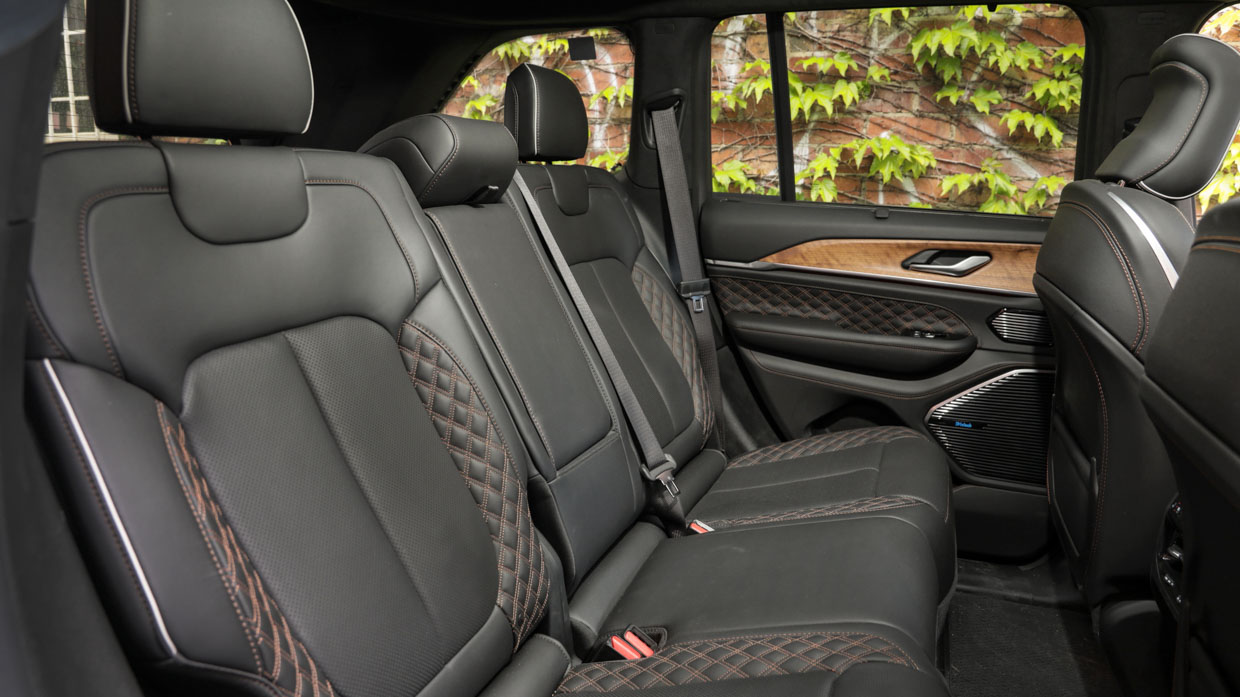
The entire rear door-cards are soft-touch and come with in-built blinds, while there’s quad-zone climate control, quad rear air vents, outboard seat heating and cooling, four USB outlets and a 240-volt outlet for charging things like laptops.
There’s decent rear knee-room, head-room and shoulder-room, and foot-room is adequate, although the back doors could open wider.
The boot is merely good. An electric tailgate is always nice, however the second row, while tilt adjustable, forgoes the sliding arrangement common on many cheaper SUVs – always handy for extending boot space.
The rear backrest lacks the flexibility expected at this price, with only a 60/40 split-fold and no ski-port – and in a major omission, you can’t remotely fold the rear seats from the boot area itself. You have to walk and do it from the side doors – not very $129K.
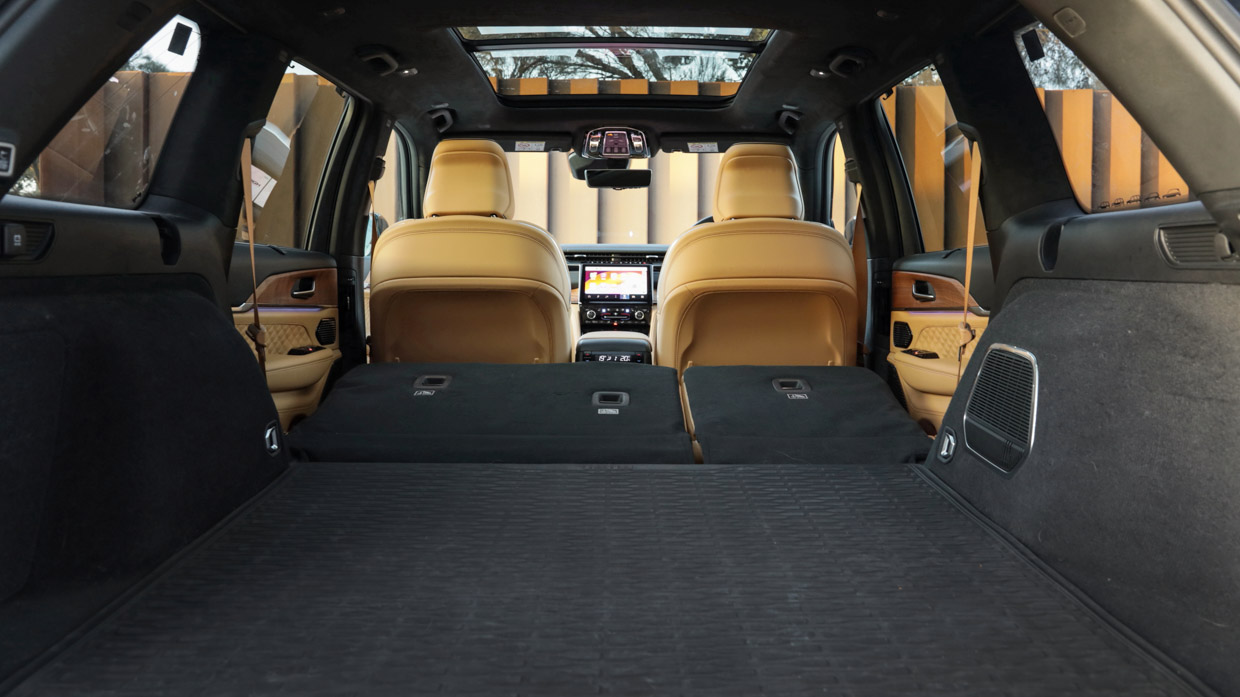
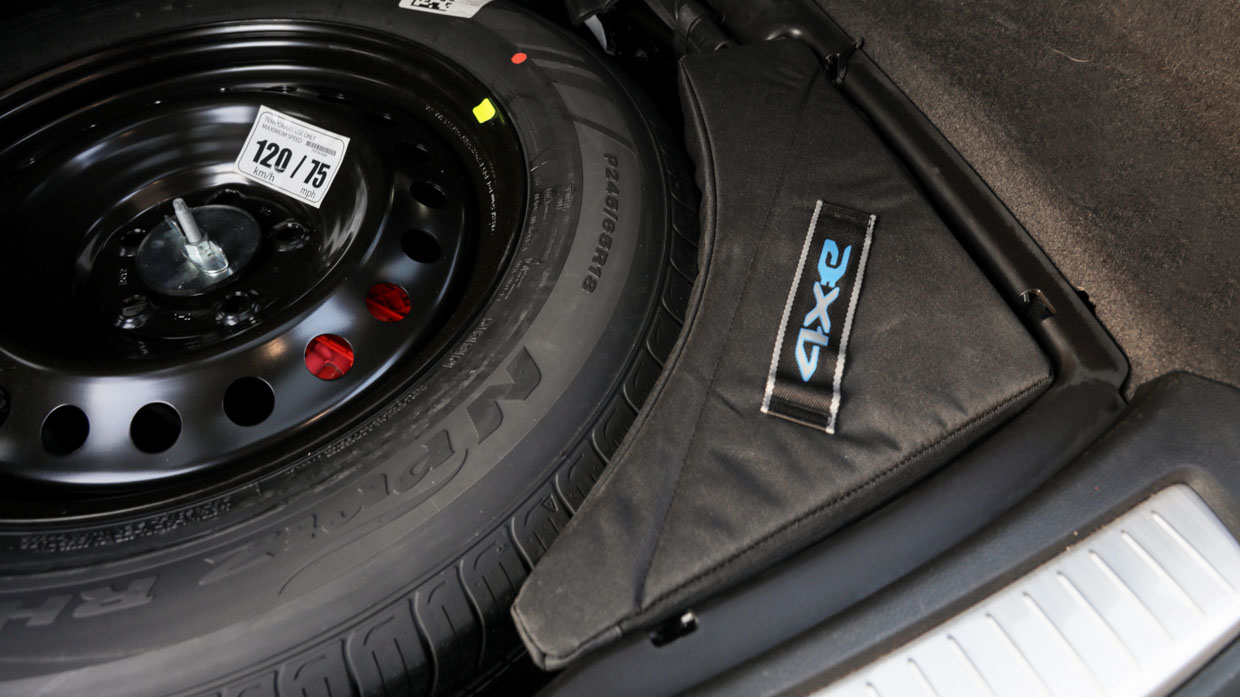
The boot floor is high, owing to the decision to accommodate a 245/65R18 spare wheel. This is a potential packaging concession, as some SUVs store an underslung full-size spare that does not impact cargo room. (For reference, the PHEV battery is stored in the middle of the car)
But when most rivals run with a much more marginal space-saver spare, the Grand Cherokee 4xe provides some additional reassurance for touring.
If you often pack a lot of stuff into the boot, there might be better options than the 4xe – not least the seven-seat Grand Cherokee L, a vehicle which has a truly American-size boot.
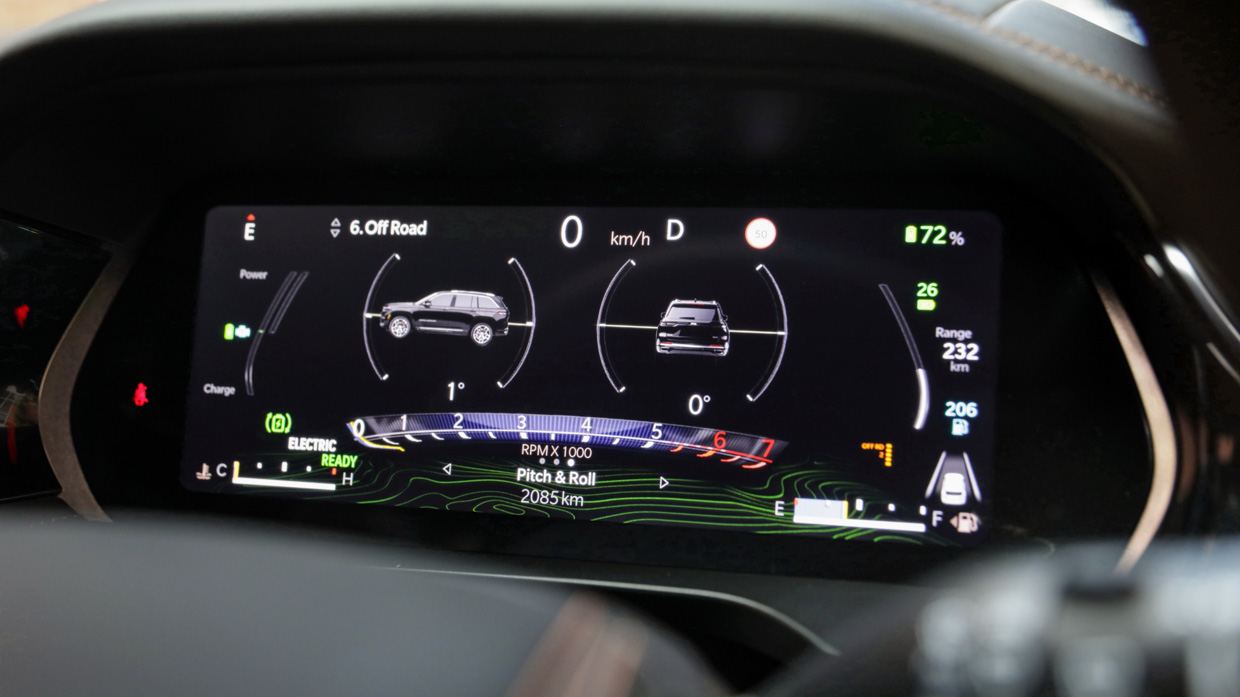
While the 4xe’s cabin looks stunning in its Summit Reserve guise – serial Jeep monogamists will be blown away by the luxe on offer – anybody with a new-ish Audi, BMW or Mercedes-Benz also in the garage might not be quite as sold.
The jury remains out for us on ultimate build quality. Frankly, our expectations are high with the 4xe’s luxury price tag.
At one point, an attempt to select the navigation mode in the digital instrument cluster was met with an unchanging “map display is loading – please wait”.
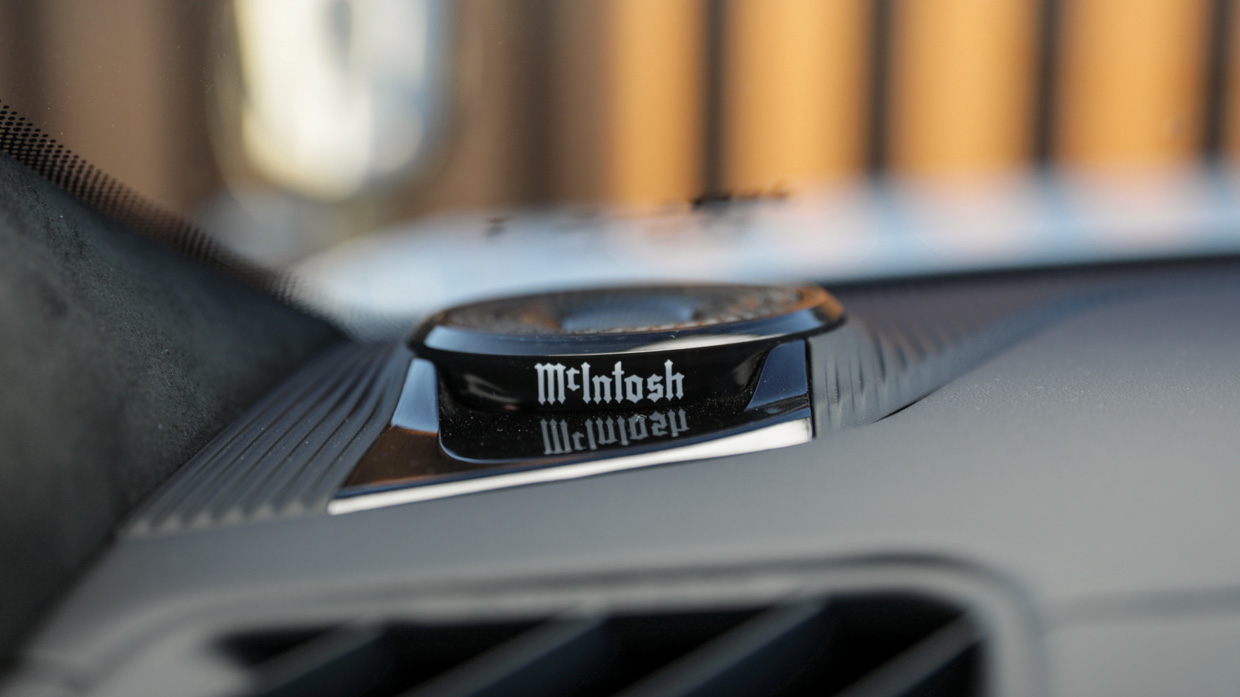
On country roads, the seat belt adjusters of our test car rattled quietly right next to our ear, and there was another quiet rattle coming from the rear of the car around aft of the sunroof.
It’s a very quiet car now with good sound deadening, and it’s possibly best to crank the McIntosh stereo and not drive in silence.
The Jeep Grand Cherokee 4xe is a safe car, scoring a maximum five stars during local ANCAP crash testing – although this was under the recently superseded 2020-2022 testing criteria. ANCAP has not released a crash rating for the Grand Cherokee 4xe under its newer, stricter 2023 regimen.
The 4xe comes with the following safety features as standard:
The Grand Cherokee does not offer a front centre airbag.
During our test, all active safety systems worked as intended, keeping the Grand Cherokee within line markings and without being overly intrusive.
For running costs, the 4xe could be a very cheap – or surprisingly expensive – car to fuel, depending on how you use it.
Say you have a daily commute and use 50km of electric-only mode, plugging the car in each night.
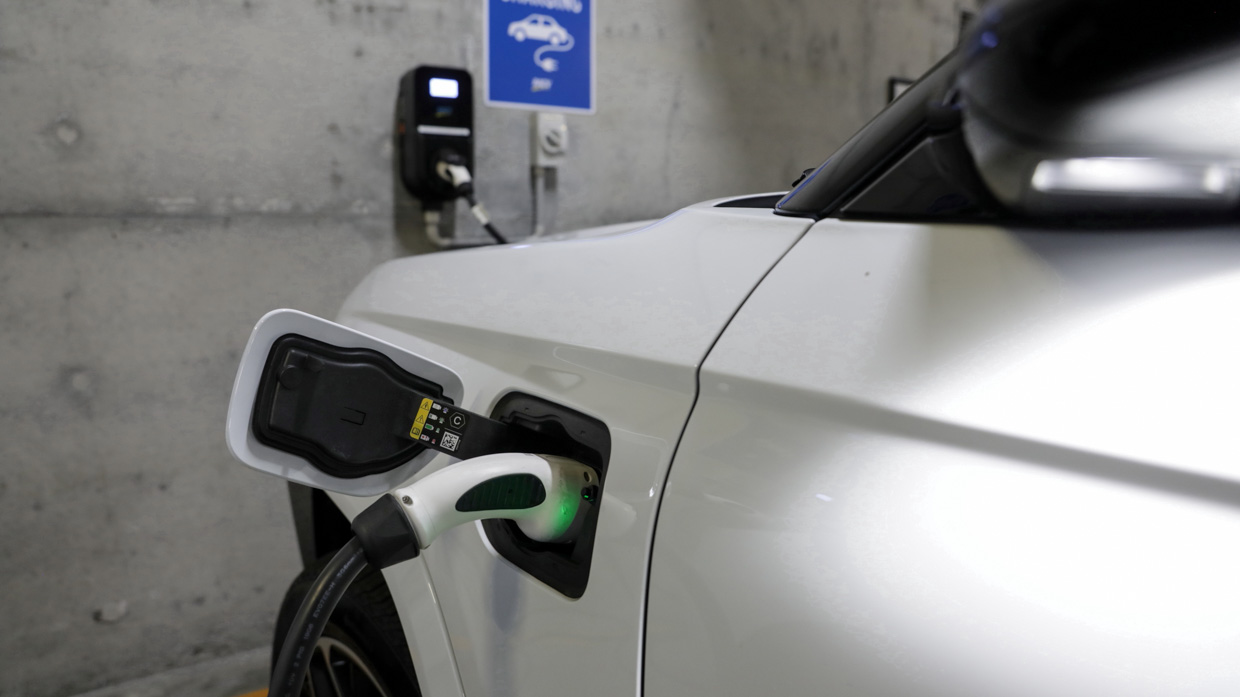
Assuming an electricity price of 23.84c/kWh, that 50km costs you less than $4.00 – versus at least $11.12 at $2.09 per litre if you were driving the V6 Grand Cherokee L, which claims 10.6L/100km on the combined cycle.
On this ‘best case scenario’ basis, driving the 4xe for 260 business days a year, it would take five to six years to get back the $10,500 price premium over the seven-seat L Summit Reserve V6 – ignoring any value you put on any other differences.
The mood dulls if you compare the 4xe to the $98K five-seat Overland – it’d take you more like 15-18 years at current fuel prices to recoup that difference.
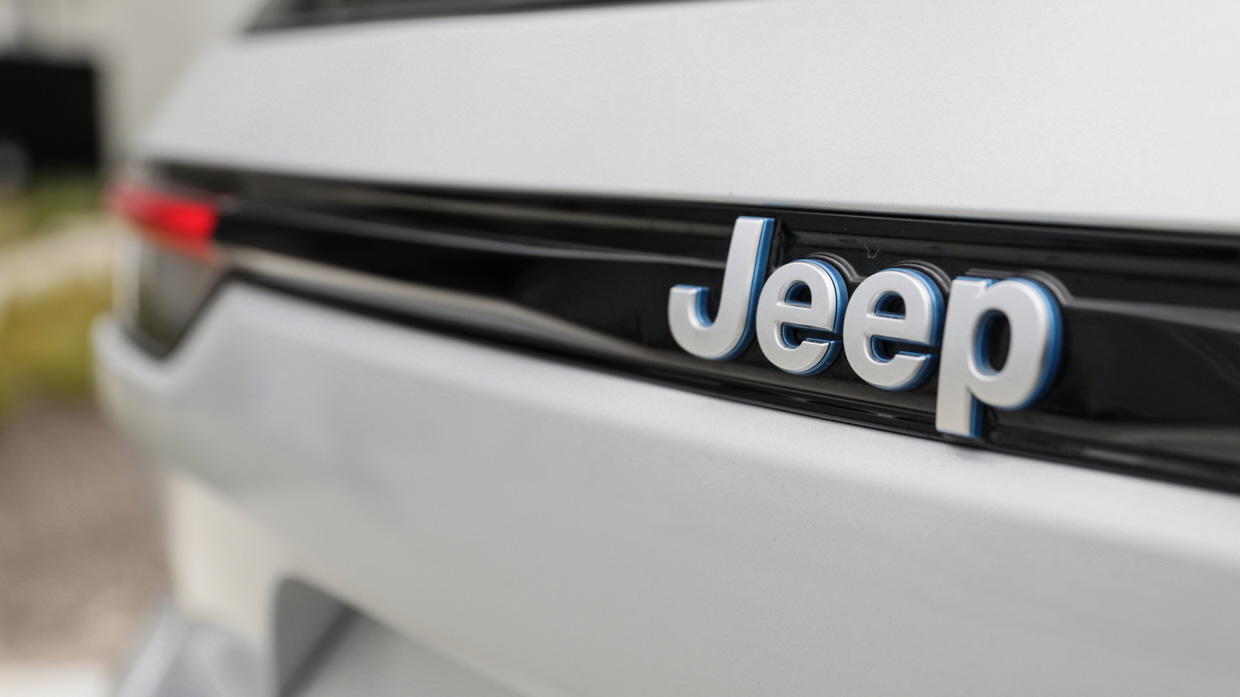
More curiously, once the battery is kaput, the 4xe is seemingly no more economical than the V6 – despite still being a full-blown hybrid.
We took trip computer readings from six vehicles on the launch, and over 6100 cumulative kilometres the 4xe was returning an average of 10.8L/100km.
On that basis, with its reduced-size 72-litre fuel tank, the 4xe has a theoretical range around 720km – interestingly, about 160km less than the V6 Overland with its 87-litre tank.
Test vehicles tend to be driven hard during launch events, so will deliver a definitive economy and range verdict when we can sample the 4xe more extensively in the coming months.
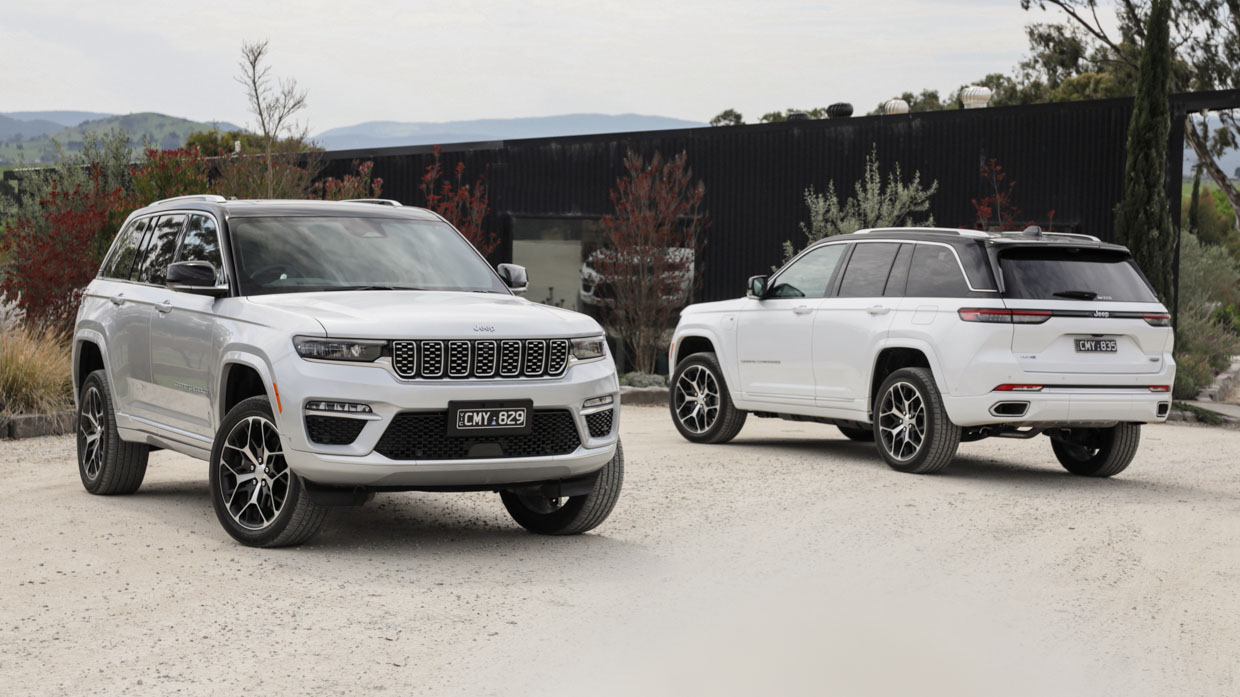
As for servicing, the 4xe costs the same as all other Grand Cherokee models, that being $399 every 12 months or 12,000km (whichever comes first) capped over five years, for a five-year total servicing cost of $1995.
The 4xe comes with Jeep’s standard five-year, 100,000km warranty, which could be better. Many manufacturers now offer unlimited-kilometre warranties. That said, the 4xe’s battery is warranted to eight years, 160,000km.
Like many other manufacturers, Jeep includes complimentary roadside assistance for the duration of the vehicle’s warranty.
We love the 4xe’s turbo-electric four-cylinder powertrain – it’s smoother, quieter and packs more low-down muscle than the V6, which feels thrashy, breathless and cheap by comparison.
The 4xe’s powertrain elevates Grand Cherokee driving experience to a new level, even if it seems the hybrid’s fuel economy benefit is disappointingly minimal once the battery is exhausted. We hope we’re proved wrong once we get to do a longer test.
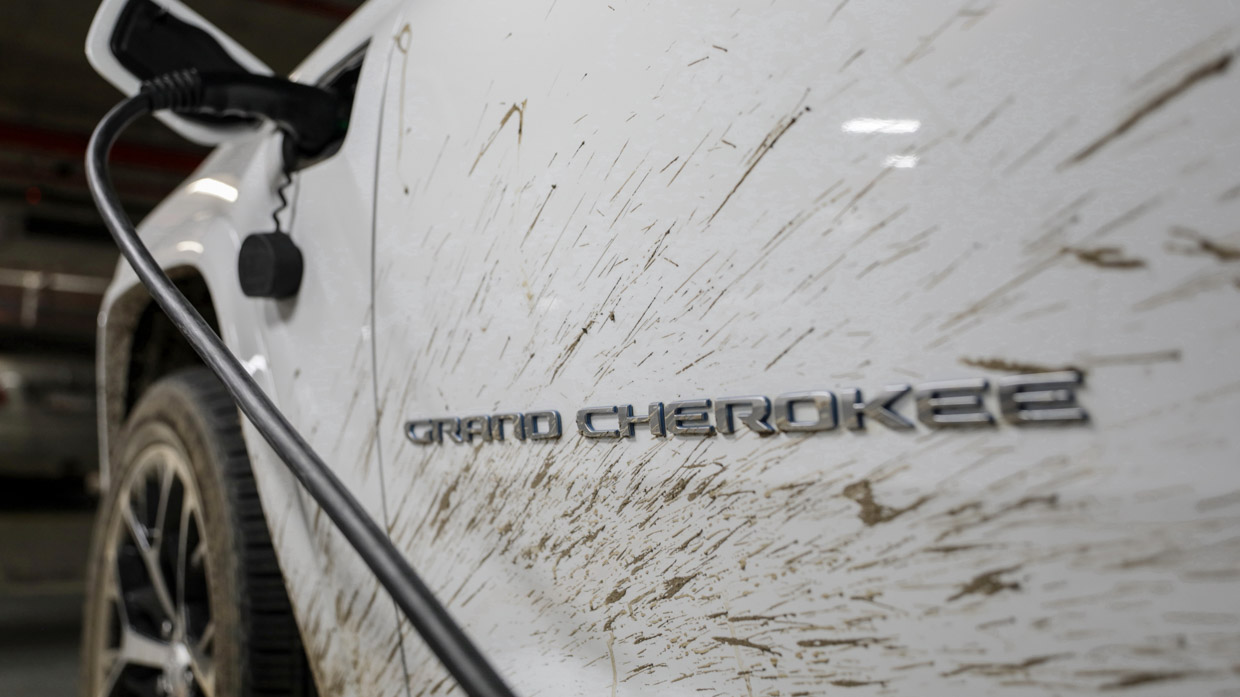
Whichever way you cut it, $129,950 is a lot of money for a Jeep. Just three years ago, a top-spec Grand Cherokee Summit V6 was $85,950. And you thought milk and bread had gone up.
Cashed-up Jeep fans may relish the chance to buy a new, range-topping Grand Cherokee with all the trimmings – and might not even blink at the price. They are likely to love the 4xe, even if they feel guilty for not plugging it in more.
For everybody else, the Jeep Grand Cherokee 4xe seems a bit of a harder sell.
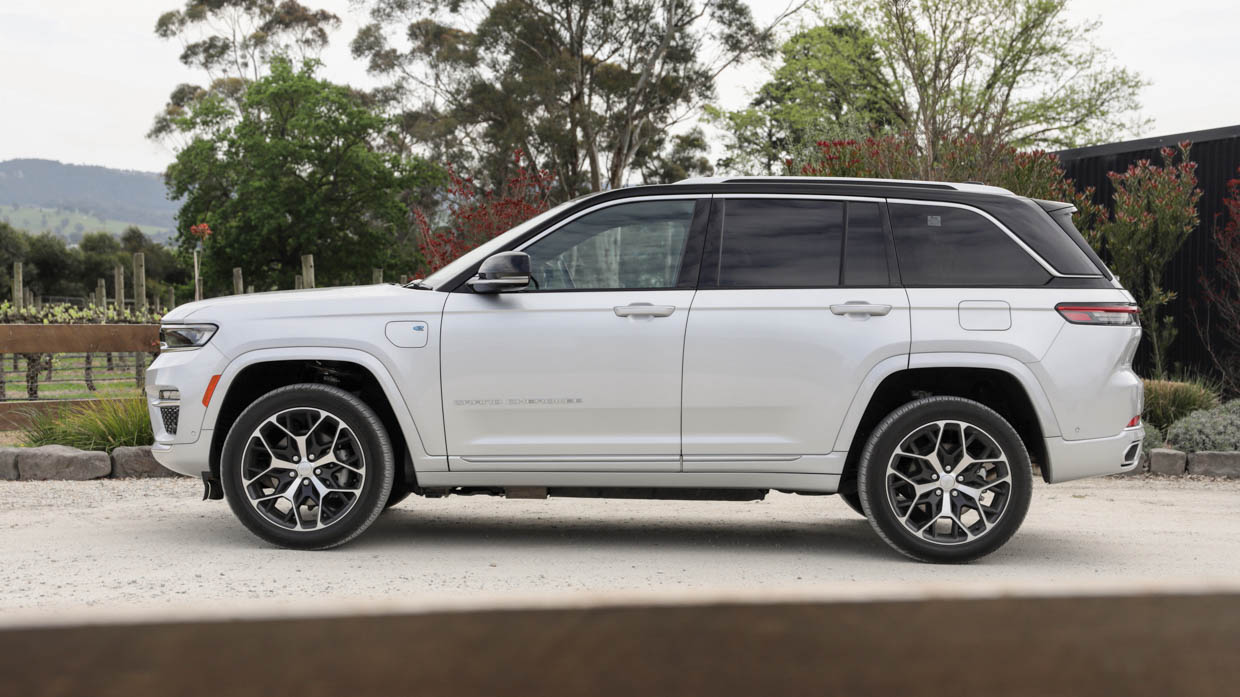
More budget-aware Jeep fans will need to do fewer than 50km per day, park the car in a driveway or garage and be happy to habitually plug it in, if they want to claw back the $10,500 premium over the V6 Grand Cherokee L Summit Reserve.
They’ll also be making a dent in their daily carbon footprint, especially if paired with a home solar set-up.
But if you’re parking a car in a garage and plugging it in, why not just skip the PHEV thing and go straight to EV?
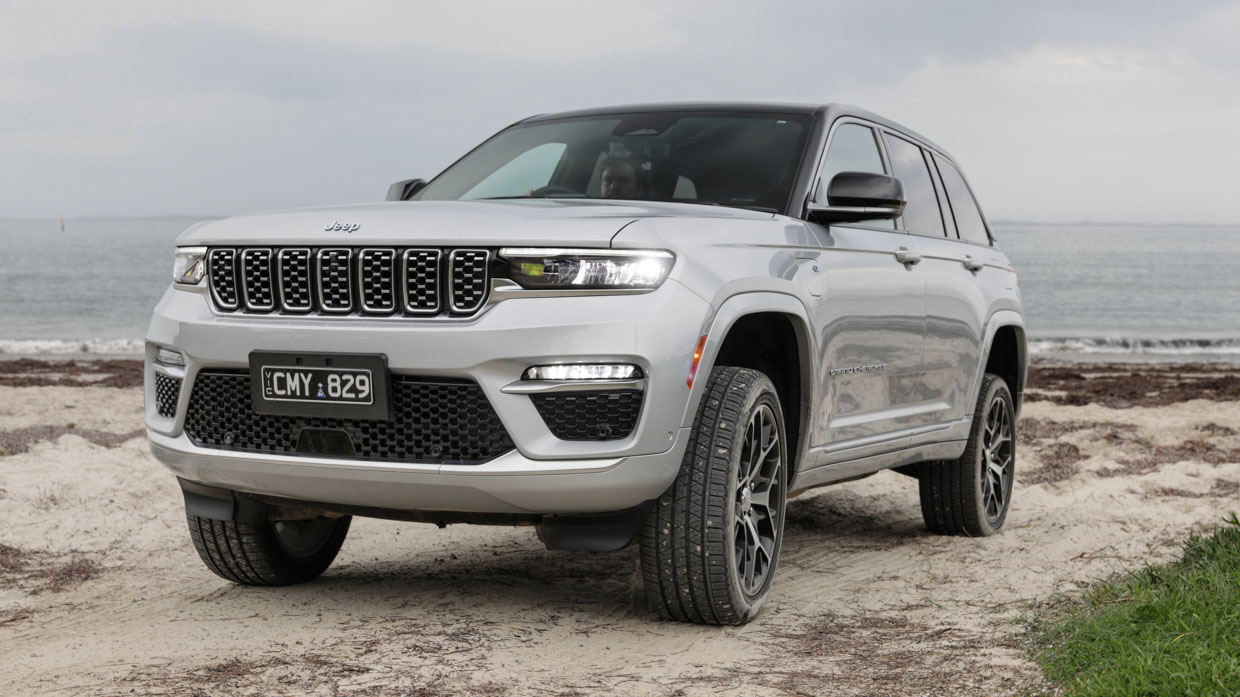
If you can stomach not buying a Jeep – which to some readers will be like suggesting another religion – there are plenty of all-wheel-drive, five-seat SUV options in the $129,950 ballpark, including $135,900 BMW iX xDrive40 or forthcoming $132,900 Polestar 3.
While they may lack some of the Jeep’s equipment and its off-road chops, and perhaps ultimate versatility, you get a more premium badge, better build quality, potentially stronger resale, an all-electric powertrain and equivalent grunt to the complex 4xe.
Please note that changes have been made to this review to correct some output and weight figures.
Variant tested SUMMIT RESERVE 4xe PHEV (4x4)
Key specs (as tested)
About Chasing cars
Chasing Cars reviews are 100% independent.
Because we are powered by Budget Direct Insurance, we don’t receive advertising or sales revenue from car manufacturers.
We’re truly independent – giving you Australia’s best car reviews.
The estimate provided does not take into account your personal circumstances but is intended to give a general indication of the cost of insurance, in order to obtain a complete quote, please visit www.budgetdirect.com.au. Estimate includes 15%^ online discount.
^Conditions Apply
Budget Direct Insurance arranged by Auto & General Services Pty Ltd ACN 003 617 909(AGS) AFSL 241 411, for and on behalf of the insurer, Auto & General Insurance Company Limited(ABN 42 111 586 353, AFSL 285 571).Because we don’t know your financial needs, we can’t advise you if this insurance will suit you. You should consider your needs and the Product Disclosure Statement before making a decision to buy insurance. Terms and conditions apply.
Indicative quote based on assumptions including postcode , 40 year old male with no offences, licence suspensions or claims in the last 5 years, a NCD Rating 1 and no younger drivers listed. White car, driven up to 10,000kms a year, unfinanced, with no modifications, factory options and/or non-standard accessories, private use only and garaged at night.
^Online Discounts Terms & Conditions
1. Discounts apply to the premium paid for a new Budget Direct Gold Comprehensive Car Insurance, Third Party Property Only or Third Party Property, Fire & Theft Insurance policy initiated online on or after 29 March 2017. Discounts do not apply to optional Roadside Assistance.
2. Discounts do not apply to any renewal offer of insurance.
3. Discounts only apply to the insurance portion of the premium. Discounts are applied before government charges, taxes, levies and fees, including instalment processing fees (as applicable). The full extent of discounts may therefore be impacted.
4. We reserve the right to change the offer without notice.